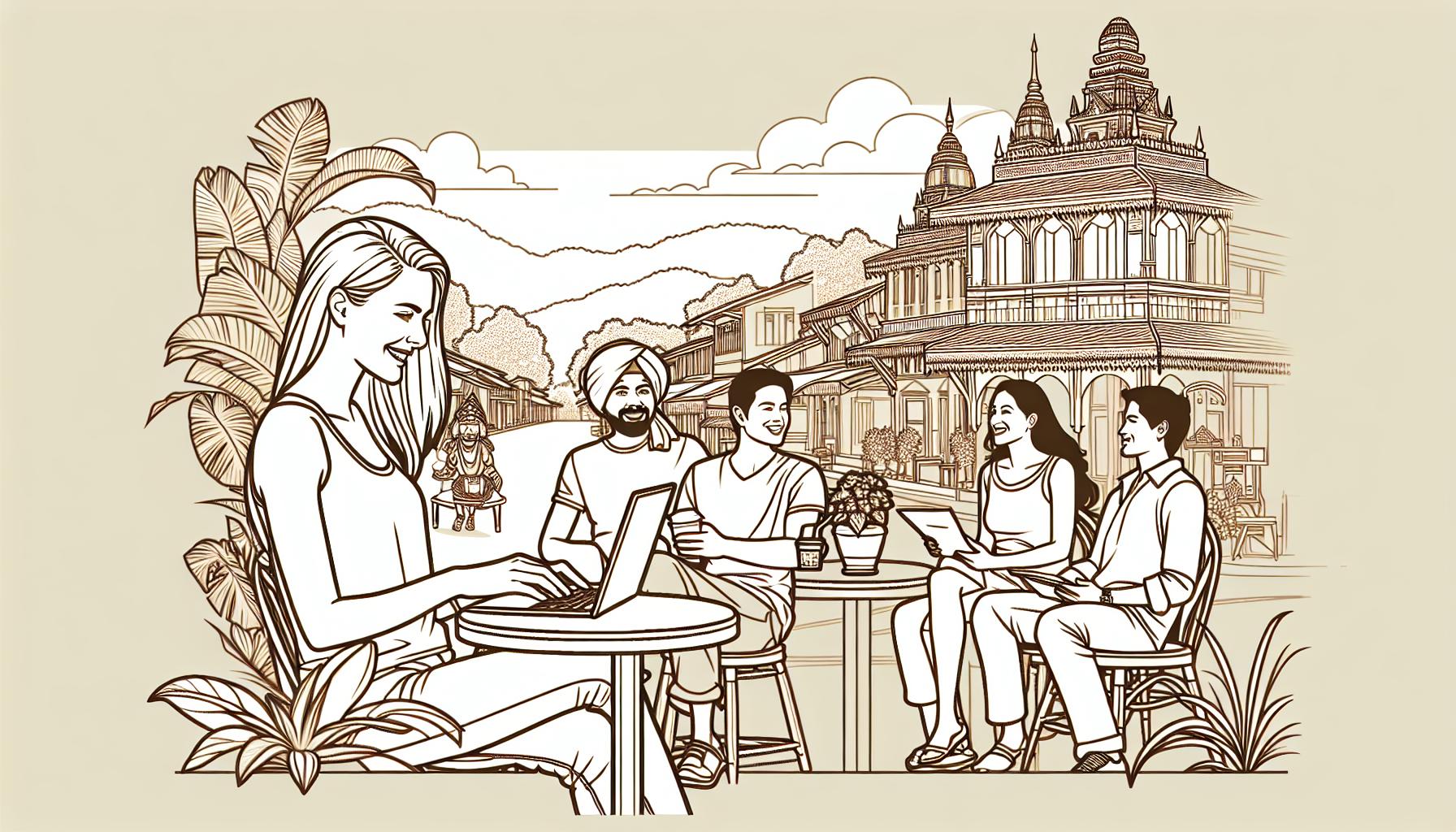
As the world becomes more interconnected, a new trend is emerging among those who wish to work and travel simultaneously – the digital slomad. This term, a fusion of ‘digital nomad’ and ‘slow travel,’ represents a lifestyle that’s not just about exploring new destinations but also about reducing environmental impact and fostering deeper connections with local communities.
While a conventional digital nomad might hop between countries or continents every few months, a digital slomad prefers to stay in one place for extended periods.
This slower pace allows them to immerse themselves in their chosen location, establish meaningful relationships with locals, and contribute positively to the environment.
The digital slomad lifestyle is about more than work and travel. It’s about embracing sustainability, fostering community ties, and experiencing the world more meaningfully.
What is a Digital Slomad?
The term ‘Slomad’ is an ingenious fusion of the words ‘slow’ and ‘nomad.’ Digital Slomads or Slow Traveling Digital Nomads are a new breed of travelers who prefer a slower, more immersive travel experience.
Unlike their digital nomad counterparts, slomads tend to stay in a travel location longer before moving on to the next destination.
How Long Do Slomads Stay in One Country?
The duration of a slomad’s stay in any given country can vary significantly, depending on their personal preferences and work commitments. But generally, to qualify as a digital slomad, the minimum stay is typically around three months.
This extended duration allows them to fully engage with the local culture and community and explore their surroundings. The more extended stay also fosters an inclination for sustainability, as slomads eventually create less environmental impact due to reduced frequency of travel.
Digital Slomad vs Digital Nomad
Though both digital slomads and digital nomads are similar in their remote working lifestyle and love for travel, the pace of travel distinguishes one from the other.
This trend of slow traveling paves the way for remote workers to balance work, travel, and cultural immersion.
With the rising popularity of sustainable practices and responsible traveling, the move to being a digital slomad might just be the next big thing in digital nomadism.
Benefits of Being a Digital Slomad
Unfolding the digital slomad lifestyle uncovers numerous benefits. It’s not just about travel. It goes deeper, affecting people’s lives in positive and transformative ways.
Save Money
One of the most significant advantages a digital slomad can experience is financial savings. Travel expenses, especially while moving often, can severely dent one’s pocket. But, this comes down considerably when one favors “slomading.”
Digital slomads are known to pick locations like Thailand or Colombia, where the cost of living is low. This leads to rent and grocery bills savings, allowing them to amass a considerable fund over time. For example, such savings could potentially make buying a house back home feasible.
Increased Productivity and Creativity
A digital slomad tends to stay longer in one place. This means they can create a stable workspace, which can amplify productivity. There’s a psychological comfort in familiarity; having a recurring workspace can develop a routine, leading to better productivity.
Improved Mental and Emotional Well-being
Living as a digital slomad facilitates better mental and emotional well-being. Not constantly being on the move provides an opportunity to build meaningful relationships with locals and integrate oneself into the community. This sense of belonging can have a positive effect on mental health.
Tips for Embracing a Digital Slomad Lifestyle
Let’s walk through some helpful tips to ease your transition into life as a digital slomad. Choose Your Destination
The first step toward embracing the digital slomad lifestyle is pinpointing the right destination.
What makes a place ideal for slomads? Places that offer modern amenities like stable internet connectivity are preferred. At the same time, it’s important to have opportunities to immerse oneself in real, authentic cultural experiences.
Other essential factors to consider include the cost of living, safety, and availability of engaging in local activities.
Best Digital Nomad Visas for Slomads
Settling in a foreign land for a longer duration necessitates proper documentation. That’s where digital nomad visas step in!
Many countries now offer digital nomad visas that allow remote workers to legally reside and work from that location for a specified duration. Here are some optimal choices for slomads:
| Country | Visa Duration | Option to Extend |
|---|---|---|
| Thailand | 90 days | Yes |
| Portugal | 1 year | Yes |
| The Bahamas | 12 months | N/A |
| Colombia | 2 years | N/A |
These visas are excellent for slomads because they offer ample time to settle into your new location, get to know the community, and dive deeply into the local culture.
Check out your options here:
- 5 Countries with the best digital nomad visas in 2024
- The best digital nomad visas in Europe
- The best digital nomad visas in Asia
- The best digital nomad visas in Latin America
- Digital nomad visas with no income requirements
The transition to a slomad lifestyle can be smooth and rewarding with the proper preparations and a well-chosen destination.
Challenges of Being a Digital Slomad
While the benefits of being a digital slomad are numerous and enticing, it’s not a lifestyle without challenges.
Whether it’s dealing with FOMO and social pressure or finding a balance between work and personal life, there are hurdles that one must navigate to reap the rewards of the slow-going digital nomad life truly.
Dealing with FOMO and Social Pressure
For all it’s worth, let’s not sugarcoat it – the fear of missing out (FOMO) can be real and highly pronounced for digital slomads. As they choose to stay longer in one place, they might perceive that they’re falling behind in exploring new destinations. Also, the growing emphasis on experiencing diverse cultures may put social pressure on them to move more frequently.
On top of that, the loneliness can sometimes creep in. Even though digital slomads have longer opportunities to forge friendships, these social bonds can weaken as they move to a new location.
Finding a Balance Between Work and Personal Life
Even if you are on a beach with a laptop, work is still work. The lines between personal and professional life can quickly blur, especially if the digital slomad runs their own sustainable business or works as a freelancer.
In such a scenario, achieving work-life balance, or even the elusive work-life integration, can be daunting. While the slow travel lifestyle offers more time to take a deep jump into a culture, long work hours may impede experiencing the local life to its fullest.
It might also lead to burnout, affect the quality of work, or reduce the digital slomad’s overall well-being.
So, the digital slomad lifestyle isn’t just about exploring new destinations. It’s about immersing oneself in a culture, prioritizing residency over tourism.
The rise of the digital slomad is a testament to the evolving nature of travel and work, proving that you can have the best of both worlds.



